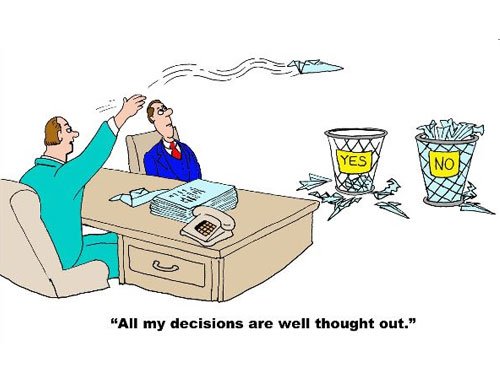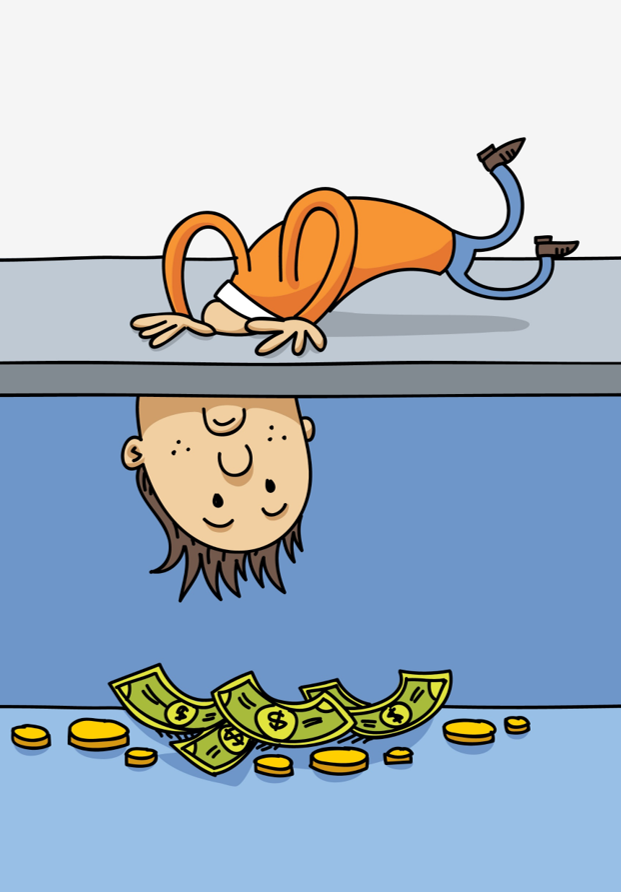
Depending on your job and your responsibilities, you will be expected to make several decisions every working day of your life.
Some of them will be trifling matters of no significance to the grander scheme of your career. What clothes you should wear to work, whether you should take a packed lunch with you or eat out and so on are the choices we make as a matter of routine.
These decisions carry no downside cost or responsibility, so they can be made without having to weigh up the implications.
What about the more serious calls on your judgement? Should you dismiss a poorly performing employee or send them for retraining and a transfer to another department? Is it better to provide your sales force with company cars or pay them a car allowance?
The higher you climb up the corporate ladder, the more decisions you’ll need to make and some of them will be tough, sometimes without clear company guidelines or precedents to rely on.
Will you approach them with a clear and open mind? Or will you be influenced by the tugs and pulls of your own personal biases?
The sunk cost fallacy
This is one of the most common traps waiting for the unwary decision maker. Sunk cost refers to expenses that have already been incurred and cannot be recovered.
Let’s say that two months ago you decided one of your departments needed to have their systems upgraded. You called in the experts to help you figure out the key issues and got the top three suppliers to give you detailed proposals. You weighed up their cost estimates for supply, installation and maintenance, compared their respective reputations in the market and made your call.
You spent nearly $1 million but the department’s problems haven’t been resolved. Technical difficulties, which nobody anticipated, have rendered the new equipment scarcely more effective than the old.

What are your options?
You have two choices:
- Spend another $150,000 on modifications which your supplier believes will resolve the issues.
- Scrap the new installations and replace them with an entirely new system with proven capacity to get your department working properly. The launch price is $650,000.
You’ve invested a lot of time and energy on this project and you’re angry and frustrated that the problems persist. You went to a lot of trouble to identify the need, pick the right supplier and make sure the price was fair. You have tons of emotional commitment at stake here.
You’ll tell yourself that you’ve come this far, spent nearly a million dollars and for just an extra fifteen percent, you’ve been told that everything will be okay. It’s a no-brainer, right? Stick with the supplier you know and accept their assurance that the $150,000 extra will do the trick.
You’ve fallen right into the trap

The reason that it seems the right thing to do is that we’re not machines. In the human world, sunk costs often influence decisions because we’re all averse to making a loss.
To spend a further $650,000 on a totally new system, even though it’s guaranteed to do everything you need, will mean you’ll overrun your budget by 65%. The extra $150,000 your current supplier is asking for puts you over by a much more respectable 15%.
But that’s irrelevant. You’ll be closer to your original budget but still without a guarantee that it will perform as required. After that $150,000, you may be asked to kick in even more. Who knows where it will end?
Logically, this is what you should do
The money (and time and sweat) you’ve already invested is a sunk cost and should be ignored. It can’t be recovered and therefore should play no further part in your decision. Your only objective should be to fix your department’s system problems.
Get the supplier to rip out their installation and take it away. You’ll negotiate with them later to see how much of your costs are recoverable without an expensive legal battle. Right now, all you’re focusing on is getting the system to work as it should.
Having verified that the $650,000 system really can do what it says on the box, put your order in immediately.
The sunk cost fallacy is most dangerous when we’ve invested a lot of time, energy or money in a project or a relationship. That expenditure appears to have been wasted if we change course even if our current track is leading us nowhere. The more money we throw at the problem, the greater the sunk costs and the greater the urge to continue.
There may be good reasons to continue investing in a project to finalize it, providing the results are heading in the right direction. But avoid the temptation to do so based purely on trying to offset unrecoverable costs.
Unbiased and rational decision making is only possible if you forget about costs already incurred. The only important consideration is how you assess future costs and benefits.
Think about this
Look around your department or organization. Can you identify any projects where the sunk cost fallacy is consuming large amounts of cash or effort for little reward, just because things have always been done that way or everyone’s scared to cut the money flow? Explore alternative ways to achieve the project’s objectives where return on investment can be closely monitored.
If you liked, then please subscribe to our YouTube Channel for video content. You can also find us on Twitter, Facebook, Instagram and Linkedin.
You will also like
Read more articles from our weekly series
The Business Mentor





